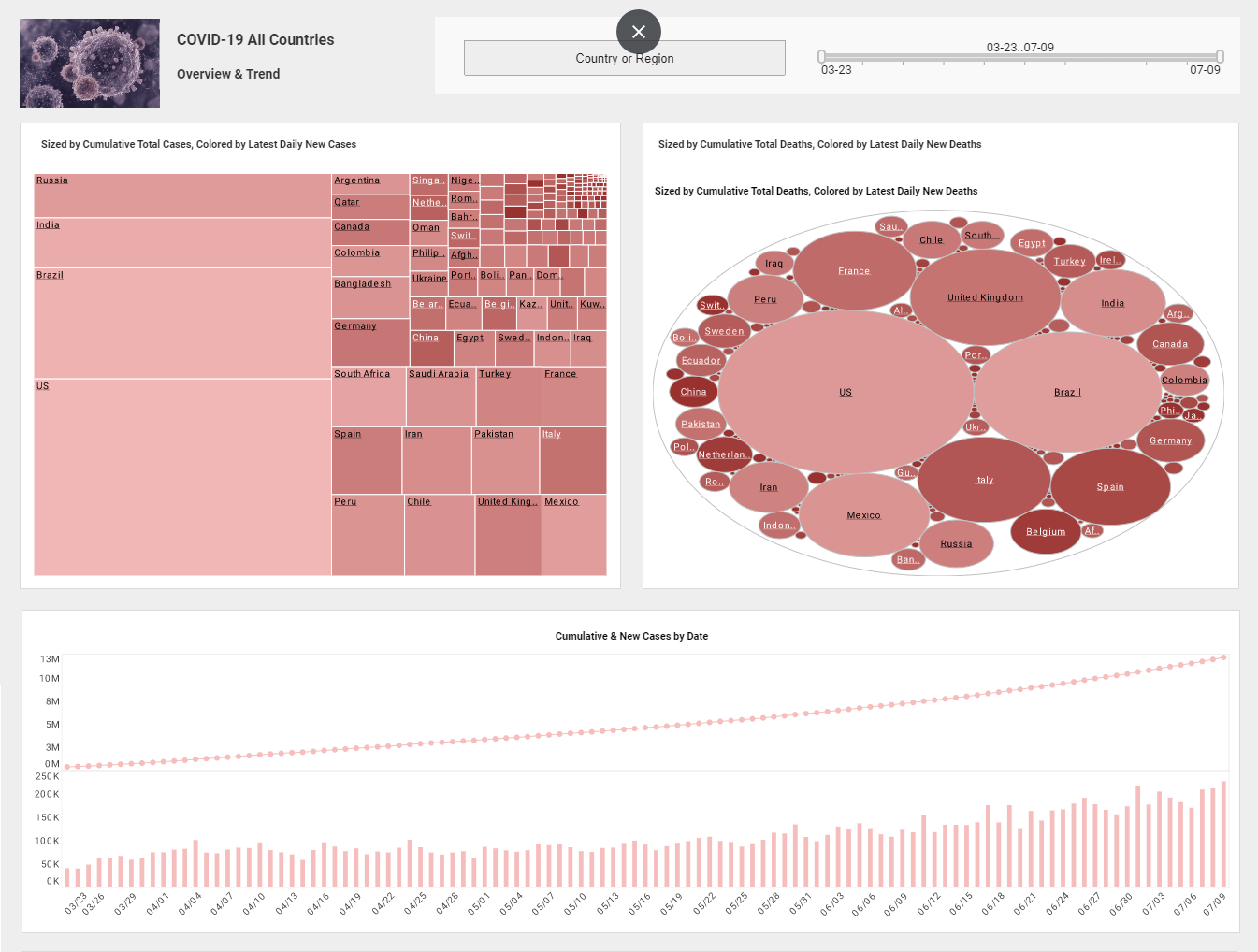InetSoft BI Information: Self-service Business Intelligence Tips
Like some other business intelligence software providers, we preach the benefits of self-service BI and point to unique capabilities of our software such as end-user defined data mashup for its self-service benefits. However, unleashing self-service BI does need to be done carefully. Here are five tips to a successful self-service BI deployment.
In many cases, enterprises end up with a handful of power users or BI analysts who use advanced BI tools to generate hundreds, if not thousands of new reports and dashboards, many of which can conflict with each other or at least confuse new viewers of them. Quickly a repository of unorganized information can be overwhelming for casual users. Either they spend too much time trying to find the right report or are not sure if they can trust or understand the ones they find.
Then as irony for self-service BI, some may give up and ask IT for help to generate a new custom report. Of course this just adds to the report backlog that self-service BI was supposed to reduce. Other pitfalls include when power users use the self-service tools to perform heavy queries on data warehouses or operational databases, which they then export to Excel for analysis. Potentially runaway queries can erode query performance significantly, turning off casual business users from using the BI platform.
So despite the promise, if left unplanned, self-service BI can sabotage a successful BI deployment by cutting mass user adoption, failing to reduce report backlogs, impairing query performance, and increasing confusion over the "single truth.". To prevent this from happening, here are five tips to implement self-service BI wisely:
| #1 Ranking: Read how InetSoft was rated #1 for user adoption in G2's user survey-based index | Read More |
1. Give the right BI tool to the right type of user
BI analysts need the ability to create ad hoc reports while business users need the ad hoc ability to navigate reports or dashboards. Note the difference. A powers user often will create brand new reports, often needing to mash up disparate data sources or at least fields. Business users, rather just a summarized report or an interactive dashboard that might cover their most frequently used key performance indicators, plus have the ability to drill down further, if necessary.
2. Provide foundational reports and dashboards
To kick start an organization to start using a new BI tool, the deployment team should take the time to set up the key reports or dashboards that each department might need. This gives a chance for the project leaders to get more involved with the business, not less, which is a common pitfall of poor BI deployments. You cannot just set up a data warehouse and hope people will use it; to get good adoption, you need to lead people to it.
3. Have at least one BI tool expert
A BI expert is the person in each department who essentially becomes part of the BI team's front line. His or her role is to build ad hoc reports that spawn off of the initial standardized reports and can come up with ideas for new ones. In larger enterprises they can also provide user feedback and help to define other reporting standards, evaluate other BI tools, and create a business intelligence project plan. BI experts can be critical to the deployment's long-term success.
4. Harness the power of advanced users
Advanced users can both contribute to the success of a deployment or impede it. To ensure the former, give advanced users greater information access and asset creation privileges and certainly permit wide data exploration. But to ward against the proliferation of spreadmarts, set limits on how many reports or dashboards can be saved back to the "public" BI environment. It may even be necessary to set up a review board to oversee this. This tight-and-loose strategy can both empower advanced users to derive maximum value from the BI solution while reigning in tendencies to bloat it.
5. Get executives to bless the new BI application
One last key ingredient for successful self-service BI, VP's or department heads need to make to make it clear to their teams that any data or chart needs to be created using the new BI application. While there may be reasonable exceptions, giving the new tool this level of sanctioning will help make sure all staff will take the time to learn how to use it.
Consider these five tips and your self-service BI implementation will succeed.



